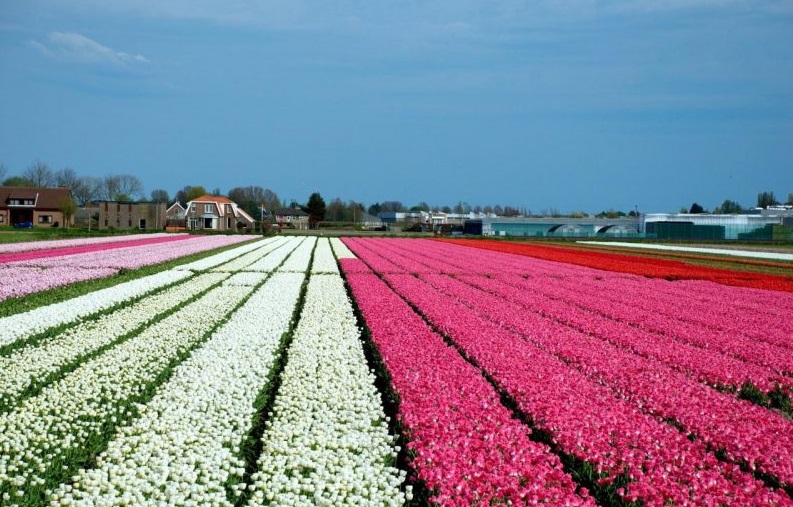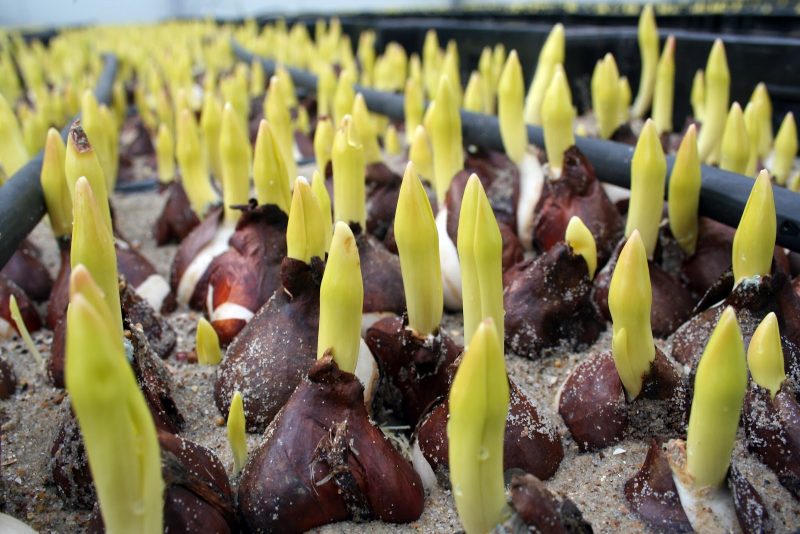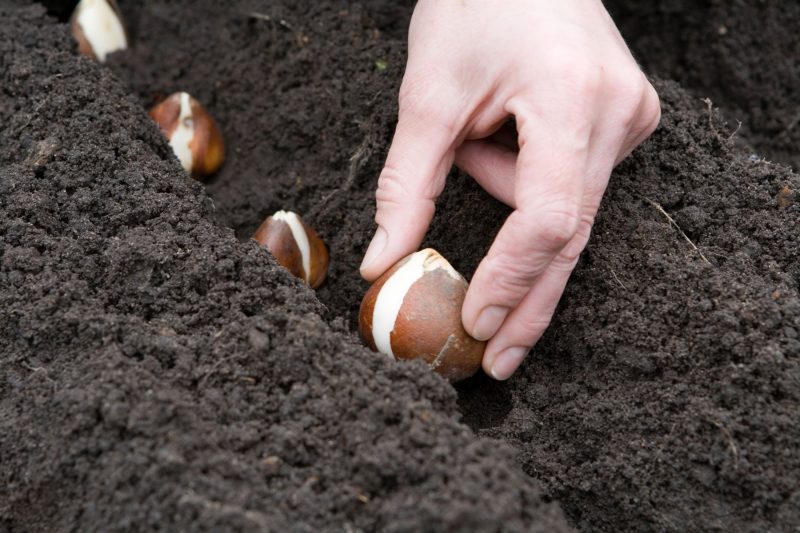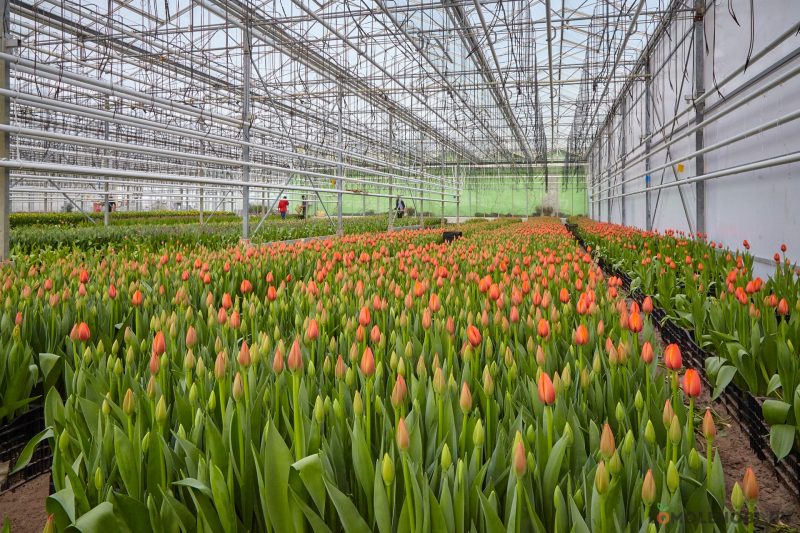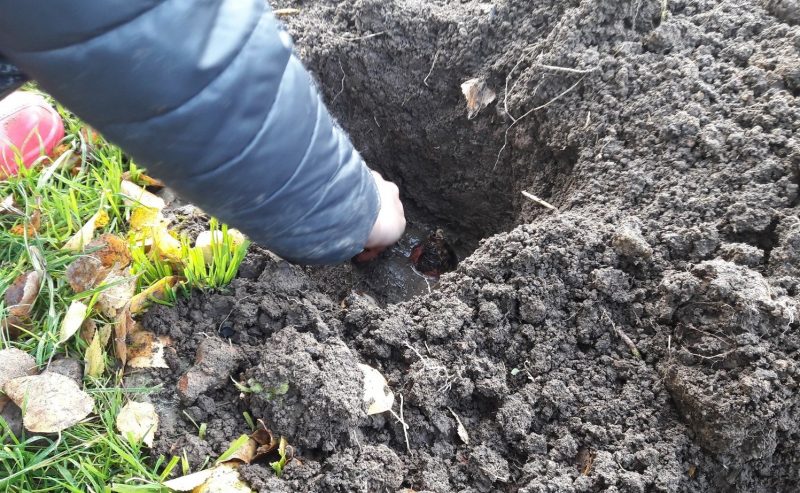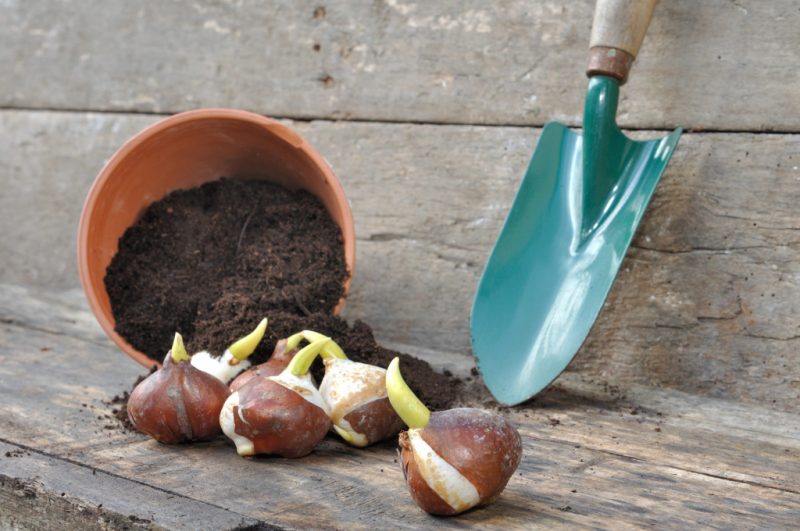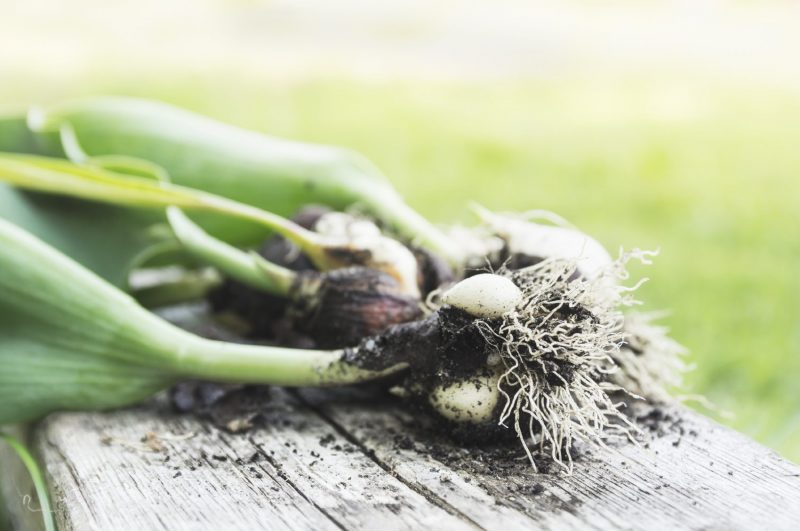It is impossible to imagine a spring plot without tulips. These magnificent flowers from the Lily family adorn the front gardens of private estates, flower beds in parks and grown on an industrial scale for cutting. And not surprisingly: exquisite tulips already in the 16th century won recognition of the most significant figures in history.
Material Content:
Varieties and types of Tulips
Tulip is a perennial bulbous plant, which consists of subordinate roots, an upright shoot and a flower of regular shape, revealing in the sun and closing in their absence. The roots develop from the bottom of the bulb, and the shoots of individual varieties reach a height of one meter.
According to the latest version of the Plant List site, the genus has 113 species, but cultivated varieties mainly belong to the type variety Gesner's garden tulip.
Less common are tulips: forest, Bieberstein and two-flowered. According to the classification developed in the Netherlands, today 10 thousand varieties are registered, divided into 4 groups and 15 classes.
- Group I combines tulips with early flowering and consists of two classes - simple early flowering and double. The most prominent representatives: Madam Testu, Electra, Golden Harvest, Demetr.
- Group II - flowers with medium flowering. They are represented by the following two classes: the Triumph tulip with a height of up to 70 cm and a varied color of large large-flowered flowers, as well as the Darwin Hybrids tulip, the varieties of which grow to 80 cm and have red flowers. Popular representatives: Vivex, Big Cheef, Snow Star, Golden Eddi.
- Group III - flowers with late flowering. Classes from 5 to 11 belong to it - simple late tulips with powerful tall shoots, elegant lily-colored tulips with pointed petals, fringed, green-flowered tulips, Rembrandt, the most exotic parrot tulips and terry tulips. Common varieties: Gorget, Bahus, Red Shine, Exotica, Hollywood, Fantasy.
- Group IV combines species and botanical flowers of 12-15 grades, among which the most popular are representatives such as Boy, Passion, Yellow Down.
Planting in the open ground of a flower
In order for flowers to please their beauty, one should responsibly approach the issue of planting work.
Soil preparation and location
For tulips, well-lit, windproof areas with drained soil and fertile soil composition are selected. The hydrogen indicator of the soil should be closer to 4.0 or neutral. When preparing the soil, compost should be introduced, which will improve its loose structure, and a little superphosphate, which increases fertility. During digging, if possible, rhizomes of weed vegetation are selected.
How and when to plant tulips
The optimal time for planting tulips is the second half of September, when the soil temperature at a depth of 12 cm will be 10 ° C.
The choice of terms should be approached responsibly, since the plants must have time to take root, but not stretch out and go into growth under the winter. The rooting duration is 20 to 30 days.
When the time has come:
- Planting material is pickled for about 1 hour with a pink solution of manganese.
- On the plot, grooves are prepared with a depth of 3 diameters of the bulb (in heavy soils, the parameter is 2 diameters).
- Tulips are sprinkled with earth, after which they are watered, harrowed to fill moisture and mulched to preserve it and create a protective litter from the coming cold.
As a rule, the depth of incorporation of adult bulbs is 10 - 15 cm, and daughter - 5 - 7 cm.
More materials:tulips - planting and care in the open ground
How to care for Tulips
In order for the plant to annually present the florist with a riot of large flower colors, it is necessary to follow the agrotechnical regulations for cultivation, including watering, fertilizing, cultivating the soil and, of course, caring for tulips after flowering.
Watering schedule
Due to the specific morphology of the plant, which is expressed in rather short subordinate roots, which cannot get moisture from the meter layer, they are moisture-loving flowers require systematic and plentiful watering. This need is especially acute in the phases of bud formation, flowering, and in the subsequent two-week interval after the culture fades. The optimal consumption rate can range from 1 to 4 buckets of water per m2, depending on weather conditions.
Fertilizers and fertilizing
When enriching the soil with nutrients necessary for the full development of the culture, preference should be given to solutions. If the flower grower has scattered solid fertilizers, then after, abundant watering should be carried out.
The composition of fertilizing depends on the phase of plant development:
- after emergence, seedlings are fed with complexes with a high nitrogen content, accelerating the pace of development of the aerial part of the tulip;
- at the beginning of bud formation, the nitrogen fraction decreases so that the onset of the flowering phase does not drag out;
- during the last fertilizer application, which falls on the period after flowering, phosphorus and potassium are part of the fertilizing.
- microelements such as zinc and boron are added to the last top dressing to enhance the development of children.
Weed vegetation depletes the soil, takes away a nutrient reserve from a cultivated plant. To prevent this from happening, tulip weeding is systematically carried out. To save time, the procedure can be combined with loosening after irrigation, which provide free access of oxygen to the bulbs.
Plant pruning
When the tulips bloomed, what should I do next? This is a question that worries many. It is necessary to cut off faded inflorescences in a timely manner - this will help preserve the strength of the plant, which it will direct not to form unclaimed seeds, but to build onion bulbs.
Transplant Nuances
Despite the annual digging of bulbs and sorting, so that the flowers realize their full potential, it is necessary to transplant the culture to a new site at least every two years. Since the cultivation of monoculture for 2 consecutive years leads to depletion of the soil and the accumulation of specialized harmful microorganisms.
But how and when to dig out tulips after flowering? After the plants are left without magnificent inflorescences, they are fed with superphosphate and potassium sulfate. Then, for another 2 weeks, the culture is watered abundantly. It is necessary to start digging the bulbs when the aboveground part turns yellow and wilts. The procedure is carried out with a bayonet shovel so as not to damage the planting material.
On a note! The presence of bulbs throughout the summer in the land is conditionally permissible only for red varieties. All the others fade from this: the mother's bulb goes deep, pushing out the daughter ones, which next year produce weak peduncles with small inflorescences.
Before laying for storage, the bulbs are washed, disinfected, dried and sorted by size and grade. It is recommended to store planting material in a well-ventilated, darkened place at a temperature of 20 ° C. Before planting, it is worth systematically inspecting the bulbs, ruthlessly rejecting those affected by diseases and pests. Before planting in open ground, the bulbs undergo repeated disinfection and heat treatment.
Care in the fall, preparation for winter
In the fall, when the bulbs were again planted in the ground, minimal care is carried out for plantings:
- The plot is harrowed, which makes it possible to preserve the moisture reserves longer, which is necessary for the successful rooting of bulbs.
- Further, the plantings are covered with a thick layer of mulch with straw, sawdust, peat or dry leaves, which will protect the tulips from freezing.
Autumn crop care is not a big hassle.
Propagation of Tulips
At home, the flower propagates vegetatively, involving the separation of children. When digging plants, the florist can see one or two large tulip bulbs, as well as small daughter plants, which are not recommended for reproduction. They should be grown.
So that the variety does not degenerate, only bulbs should be planted, the circumference of which is 12 cm.
How to get rid of pests and diseases?
The most dangerous disease that can not be treated is a variegated virus, manifested in the form of strokes on the leaves and petals of tulips. In the case of fixing the disease, the affected specimens are removed, burned, and the land where they grew up is spilled with fungicide. Also, symptoms of fungal diseases associated with waterlogging, such as gray rot, powdery mildew, may be noted on the culture. Treatment with fungicides will help stop their development.
Mouse-like rodents, slugs, snails, bears and root ticks can cause considerable damage to the culture. The latter must be controlled by preplanting the bulbs in hot water (40 ° C). Against mouse-like rodents, special baits are used. But the rest of the pests will have to be fought mechanically, collecting and destroying them. To simplify the task a bit, you can place a broken slate in the area under which gastropod phytophages and bears like to hide.
Use in landscape design
Beautiful flowers that announce the arrival of spring are often used by landscape designers who advise:
- plant tulips on a background of an even lawn;
- to shade with flowers various masonry made of stone or forged elements of the garden;
- use monochromatic tulips when zoning the garden;
- to frame with them borders in combination with other stunted plants;
- to plant multi-colored varieties on the flowerbed near the front door, turning the art object into a bright carpet.
- place group plantings of tulips interspersed with decorative cereals and herbs.
Spring tulips, which, although they have a short flowering period, are a truly exquisite culture that can decorate the garden when it only awakens from winter sleep.


